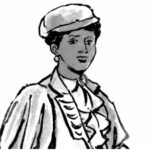Raoul Peck’s Film Uncovers Ernest Cole’s Life and Legacy
Ernest Cole, one of the first Black freelance photographers in South Africa, exposed the brutality of apartheid through his powerful images.
A new documentary by acclaimed filmmaker Raoul Peck, titled “Ernest Cole: Lost and Found,” chronicles Cole’s life and work. The film recently won the L’Oeil d’or prize for best documentary at the 77th Cannes Film Festival.
“It was important for me to understand why Ernest, a well-known Black photographer from South Africa, sort of disappeared,” Peck said. “I was angry each time I read that Ernest was depressed, that he became homeless, or that he had paranoia. They didn’t see him as a human being or respect him as an artist who was going through something.”
Cole’s Monumental Book “House of Bondage” Shocked the World
In 1967, at just 27 years old, Cole published “House of Bondage,” a groundbreaking photobook that exposed the harsh realities of apartheid in South Africa.
The book was banned in South Africa, and Cole was forced into exile, living the rest of his life away from his home country.
“It was important that I showed that reality. That’s also why I start the movie with the Sharpeville massacre. People forget it. They think apartheid is just a figure of speech. No, people were dying. People lived their whole life under constraints, like prisoners of their own country.”
Giving Voice to Cole’s Perspective
Peck’s film allows Cole to narrate his own story, responding to the often biased narratives and critiques of his work by white journalists, historians, and colleagues.
Cole’s perspective remains prominent throughout the documentary, voiced by Oscar-nominated actor LaKeith Stanfield.
“I have long admired the peerless Raoul Peck’s singular body of work,” said Stanfield. “I’m honored to have the opportunity to collaborate with him on ensuring Ernest Cole’s essential story is heard.”
Rediscovering Cole’s Lost Negatives
In 2017, over 60,000 of Cole’s negatives were discovered in a Swedish bank vault, reigniting interest in his work.
The film also explores Cole’s time in exile in the United States, where he documented the parallels between Jim Crow and apartheid through his photographs.
“Challenge institutions who have been the gatekeepers and the so-called saviors of all their work,” said Peck. “They need to be questioned. For me, this film is embedded in that movement.”





